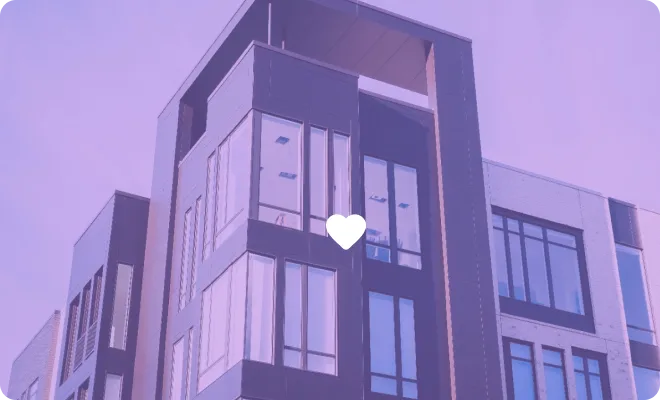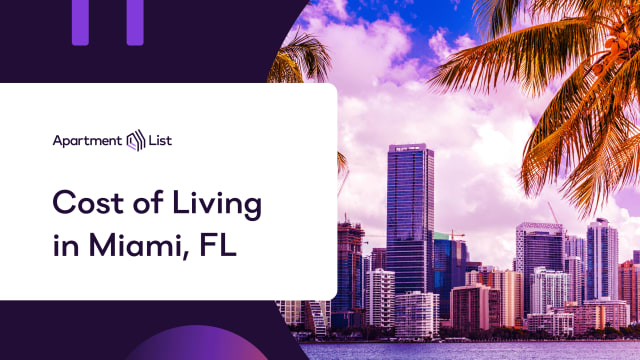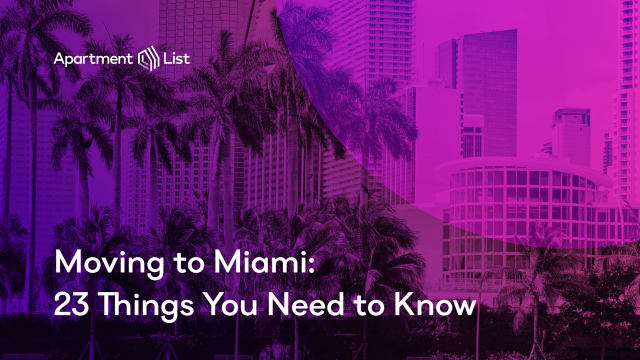
Apartment searching that doesn’t suck.
Apartment List transforms rental search into a guided journey — not an ad-driven scroll-fest. We help you move forward with clarity, ease, and confidence.
Miami offers a dynamic mix of cosmopolitan energy and tropical beauty. Renters can find sleek apartments in Downtown Miami or Brickell with stunning skyline views, while neighborhoods like Coconut Grove or Coral Gables provide family-friendly options with lush greenery and historic charm. The city’s vibrant nightlife, world-class dining, and proximity to beaches make it ideal for those seeking an active lifestyle. Miami’s booming economy spans industries like tourism, finance, and tech, attracting professionals from across the globe.



It’s everything the old way of finding an apartment isn’t.

Apartment searching that doesn’t suck.
Apartment List transforms rental search into a guided journey — not an ad-driven scroll-fest. We help you move forward with clarity, ease, and confidence.

Transparency and Support
Transparent info. Reliable support — text properties 24/7*. We obsess over peace of mind, not page views.

You Win, We Win Business Model.
Unlike traditional apartment search websites who get paid for clicks, we win when renters win.
| Personalized Matches | Personalized Matches: 'Available with Apartment List | Personalized Matches: Not available with other sites |
|---|---|---|
| Updated Listings** | Updated Listings**: 'Available with Apartment List | Updated Listings**: Not available with other sites |
| Built for Mobile | Built for Mobile: 'Available with Apartment List | Built for Mobile: Not available with other sites |
| Tour Instantly*** | Tour Instantly***: 'Available with Apartment List | Tour Instantly***: Not available with other sites |
| We Win When You Do | We Win When You Do: 'Available with Apartment List | We Win When You Do: Not available with other sites |
"Very efficient and user friendly search tool for finding your next home!"Tobi T.

Discover the optimal times to rent in your city based on seasonal market insights*, helping you make informed decisions and get the best value.
Miami’s international appeal and tourism drive high demand in Brickell, Downtown, and Miami Beach. New luxury towers are expanding options, but affordability remains a challenge. Emerging neighborhoods offer more budget-friendly choices.
Navigate apartment hunting and city life like a local with our curated articles about Miami, Florida.



Apartment List has released Miami’s results from the third annual Apartment List Renter Satisfaction Survey. This survey, which drew on responses from over 45,000 renters, provides insight on what states and cities must do to meet the needs of 111 million American renters nationwide.
"Miami renters expressed general satisfaction with the city overall," according to Apartment List. "They gave most categories near average scores."
The average rent for a 1 bedroom apartment in Miami, FL is $2,722+, while the average rent for a 2 bedroom apartment is $3,381+.
*Based on base prices that don’t include fees
International flavor defines Flagami, where Miami's western neighborhood showcases Hispanic influences through authentic restaurants and markets beyond tourist-oriented interpretations. Most rentals offer more generous space than eastern Miami neighborhoods, while the strategic positioning between downtown and western suburbs creates reasonable commutes in multiple directions. Though some commercial corridors show varied investment levels, the genuine affordability compared to rapidly appreciating eastern neighborhoods, reasonable access to both Florida International University and Miami International Airport, and authentic international character creates compelling value for urban households.
Exclusive island living defines Brickell Key, where luxury high-rises on this man-made island offer spectacular downtown Miami and Biscayne Bay views. The neighborhood features a waterfront walking path circling the entire island, with private security creating safe environments for evening strolls. Most buildings include resort-caliber amenities from infinity pools to concierge services justifying premium rental rates. Though pricing exceeds mainland alternatives, the self-contained environment with reduced traffic and secured access creates distinctive living experience just minutes from Miami's financial district. Many units feature wraparound balconies and floor-to-ceiling windows maximizing the island's water views and downtown skyline panoramas unavailable in standard urban buildings.
Historic prestige defines The Roads, where this distinctive Miami neighborhood sits on higher ground just south of downtown with its own street grid running diagonal to surrounding areas. Charming historic homes and low-rise apartment buildings create unique rental opportunities with genuine character. The walkable neighborhood offers easy access to both Brickell's business district and Coconut Grove's amenities. While rental rates reflect the premium location, the combination of central positioning, architectural distinction, and tree-canopied streets creates exceptional value for those seeking character in urban Miami.